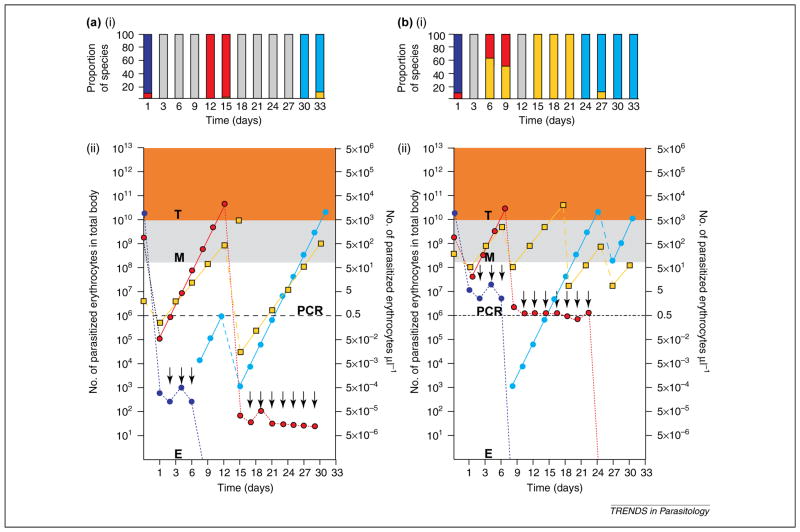Figure 3.
Further consideration that a species-transcending density-dependent force regulates mixed Plasmodium species infections. A summary of the proportion of each Plasmodium species is given in (ai) and (bi), observed by blood smear corresponding to simulated data for each of 12 three-day sample collection time points [indicated in (aii,bii)] Hypothetical data predicted to occur by asexual replication characteristics of the human Plasmodium species parasites and principles proposed in the species-transcending density-dependent (STDD) model. Orange shading represents parasite density above a threshold of ~1000 parasitized erythrocytes per μl (T). Gray shading identifies the limits of detection by microscopy (M). The black broken line represents the limits of detection by PCR. Acquired immunity is indicated by arrows. Asexual replication of the different Plasmodium species is shown as colored solid lines and parasite killing as colored broken lines. Key: purple, Plasmodium falciparum strain A; gray bars, no parasites; light blue, P. falciparum strain B; red, Plasmodium vivax; yellow; Plasmodium malariae.

